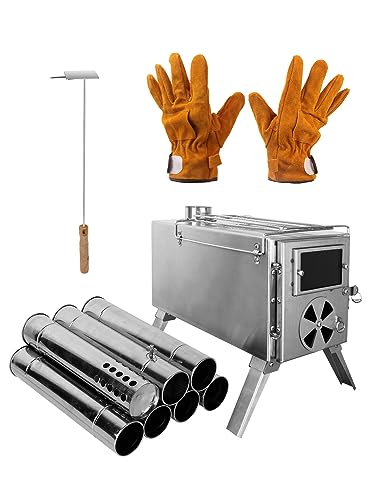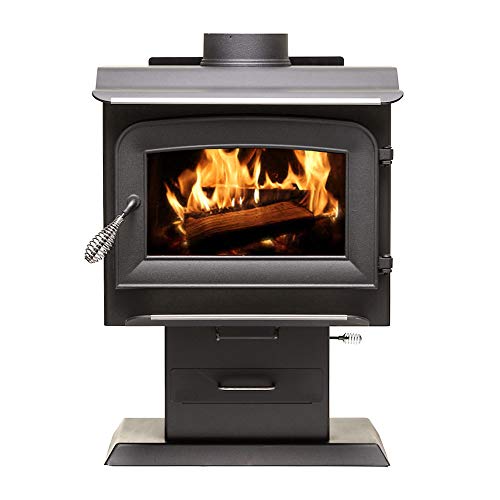네트워크 컨버터 15 Unquestionably Reasons To Love Wood Burning Stoves
페이지 정보

본문
 Wood Burning Stoves Near Me
Wood Burning Stoves Near MeWood stoves can be elegant and efficient way to heat your home. When buying a new stove there are a few things to consider. Included are energy efficiency that is certified by the EPA and cost, as well the maintenance requirements.
Avoid becoming "number-bound" and basing your decision on a certain rating or BTU output. You should also take into consideration aesthetics, suggestions from an reputable retailer and feedback.
Cost
Wood stoves can bring an elegant, stylish flair to any house. They come in a wide selection of styles and colors to fit into any decor. These stoves are also efficient in energy use and are cost-effective they can be a great alternative to costly heating systems. However there are a few factors to consider when buying a new wood stove. These include the initial price, installation costs, and additional items such as chimney liners.
The price of a wood stove clearance stove will depend on the type and size you select. You can find a freestanding stove for less than PS700. This stove comes with large viewing windows, which is kept clean with an airwash system that is extremely effective. It's multi-fuel, meaning you can burn different fuels.
Noncatalytic woodstoves are less expensive than catalytic models but are more difficult to ignite. They also require more fuel to generate the same amount of heat. They can also release more of particulate matter than catalytic models. Despite these drawbacks, the noncatalytic stove is a good option for many customers.
Pellet stoves offer another popular alternative to wood-burning stoves. They function in a similar manner, but they use smaller pellets of wood or [Redirect-302] recycled materials to create the fire and warmth. They are less difficult to maintain, Kepenk Trsfcdhf.Hfhjf.Hdasgsdfhdshshfsh but don't produce as much heat.
If you're considering pellet or wood stoves you'll need to take into account the cost of installing an air venting system. Some wood stoves require an outside combustion-air intake, while others require a venting system that connects with chimney. You may have to get your wood stove approved by local building inspectors depending on where you live and the building codes that apply in your region.
If you're installing a wood stove in an existing fireplace, you'll be able to spend less money on installation. You'll need to install a chimney liner and you may have hire a professional to clean the chimney periodically. A freestanding wood stove won't warm all the rooms in a multi-story home which is why you'll need to install radiators in order to supplement.
Energy Efficiency
Many homeowners are seeking alternatives to traditional heating systems since the cost of electricity and natural gas continues to rise. Wood stoves are among the most sought-after alternatives to traditional heating systems due to the fact that they provide a low-cost and sustainable source of heat. They also burn cleaner, which reduces the amount of air pollution.
Modern wood burning stoves are incredibly efficient in energy use, which means they generate more heat for your home while using less fuel. This is due to a variety of factors, including the fact that they feature smaller combustion chambers than previous models. They also use catalytic combustor, which helps to burn fuel more efficiently. They also produce less harmful emissions, which is important for those who reside in an area that has to comply with the stricter standards for air quality.
Another way that log burners are more environmentally friendly than traditional open flames is that they permit you to regulate the amount of air fed to the fire so that it can burn at lower temperatures for a longer period of time. This can reduce the amount of smoke generated by the fire and reduce the accumulation of flammable creosote within your chimney.
Burning a variety different types of wood, such as scrap and reclaimed wood, will create a better fuel mixture, which will reduce the amount of carbon dioxide produced by the fire. It is also possible to burn unwanted wood that was dumped in construction projects. This way, you can cut down on the cost of purchasing firewood and help to save our forests.
As a renewable resource, wood is a carbon neutral fuel source. The trees absorb carbon dioxide as they expand and release it upon burning, creating an endless cycle of life. By sourcing local wood you can also contribute to the local economy while reducing the environmental impact of your business.
Another benefit of a wood-burning stove is that it provides an additional source of heat in case an outage in power. You can keep your home warm for a long time by storing enough logs. You can also use your stove to heat water or cook food.
Environmental Impact
Based on the type of wood used and the efficiency with which it is burned, the use of a wood stove can result in negative health and environmental impacts. The combustion of wood produces dangerous gases, such as carbon monoxide, nitrogen oxides, and fine particles, also known as PM (particulate matter). The PM in smoke is composed of a range of dangerous substances such as black carbon, tar and soot. These pollutants have been linked to a number of health issues such as respiratory and heart diseases.
The carbon dioxide emissions released by wood burning stoves contribute to global warming, which adversely affects the environment and the health of humans. Additionally burning wood can result in the release of volatile organic compounds (VOCs) which are a major source of VOCs in the indoor air. VOCs, a kind of pollutant, have been associated with a variety of health problems such as headaches and irritation of the eyes.
VOCs can cause damage to the respiratory system, lungs and circulatory systems. They can also cause numerous environmental problems such as soil erosion and loss of biodiversity as well as water quality. In certain areas, the levels of VOCs in wood smoke could exceed federally enforceable standards.
According to a report from Undark Five states have provided incentives to replace older wood-burning appliances with EPA certified models. Nevertheless, many of these stoves only provide slight improvements over the previous models. Moreover, they are expensive and require electricity to operate fans, controls and pellet feeders.
As a result, some environmental organizations are beginning to eliminate incentives to promote new wood stoves and instead concentrate on encouraging people to switch to alternative heat sources. The State of Oregon, for example requires homeowners to get rid of wood-burning stoves that aren't certified and encourages them to change to heat pumps.
Wood stoves are energy efficient compared to other heating methods, such as gas or electric furnaces. They produce a higher amount of heat using less wood than their gas or electric counterparts. They are therefore a more sustainable and affordable option for heating your home. They should be regularly inspected and maintained to reduce fuel consumption and improve efficiency. For instance, taking out unused feed systems and hoppers at the end of the season can reduce rust and ensure that the stove is ready to start again in the autumn. Regular cleaning of the stove's chimney vent will also help to prevent the buildup of flammable material.
Safety
Wood burning stoves are a great alternative to heat, however they can also be dangerous for the safety of your family. Fires can cause smoke inhalation, carbon monoxide poisoning, and other serious problems. However, you can protect your home and family members by taking the proper safety precautions.
Make sure that the stove is installed and vented properly. A certified professional should install the chimney, flue pipe and connectors. The chimney should be at least three feet higher than any object that could spark. This includes overhanging trees or buildings that are adjacent. Install CO and smoke detectors in every bedroom and on each level of the house. Connect them all together so that they sound in the event that one goes off. Replace batteries and check your alarms regularly. Keep combustibles, such as garbage, paper plastics, plastics and so on away from your stove and do not ignite them in the vicinity of it.
Do not leave a wood-burning stove unattended. This is especially true during the night. If your stove is in a room with sleeping areas, turn off the heat source and open windows before you go to bed. This will prevent smoke from wood from entering the room and cause CO poisoning.
Install an air-cleaning device if you are planning to use cheap wood burning stoves stove. These systems work to capture and neutralize volatile organic compounds from the exhaust stream before it leaves the fireplace. Keep your stove clean, and keep the draft louvers, grate and draft hoods free of Ash.
Wood smoke can be dangerous to anyone, but it is particularly harmful to children and people with weak lung. It can also trigger respiratory illnesses and asthma. If possible, avoid using a wood-burning stove during days with high levels of pollution. The EPA and each state provide daily reports on the quality of air.
Certain new wood stoves are more efficient than the old ones, however they release large quantities of pollution into the atmosphere. To minimize your exposure to harmful substances select a stove that has been certified by the EPA as being over 72 percent efficient. Burn only dry, seasoned wood. This kind of cheap wood burning stoves generates more heat and fewer toxic substances than fresh green wood.

- 이전글Solid SEO Tools Tools To Streamline Your Daily Life Solid SEO Tools Trick That Every Person Should Be Able To 24.05.03
- 다음글The 10 Most Popular Pinterest Profiles To Keep Track Of About Affordable Bunk Beds For Kids 24.05.03
댓글목록
등록된 댓글이 없습니다.
